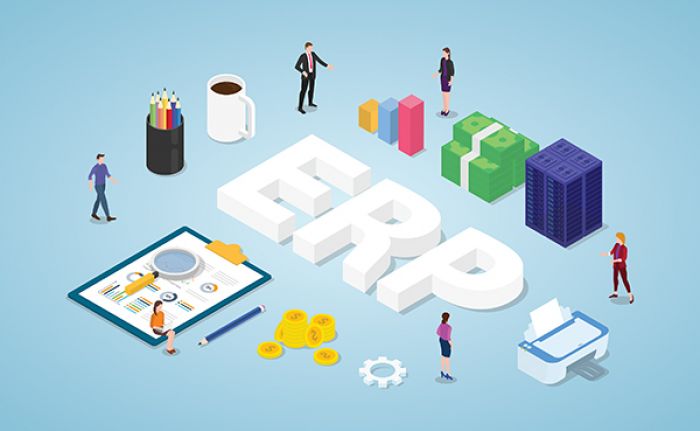One of the most important things for every business is to know about different types of software. This article will shed some light on two difference software: ERP and MRP.
Materials requirements planning is a computer-based inventory management system that determines the timing and quantity of materials required to produce a product. MRP systems are designed to manage the production process by incorporating information about customer demand, inventory levels, and manufacturing capacity.
An MRP system typically consists of three components:
1. A master schedule that indicates when each product is scheduled to be produced
2. An inventory control system that tracks the current levels of raw materials and finished products
3. A bill of materials that lists the necessary components for each product.
1. With Materials requirements planning production planning and execution are streamlined, which leads to increased efficiency and productivity.
2. MRP systems are designed to be highly flexible, so that they can easily adapt to changing conditions and requirements.
3. Because Materials requirements planning systems are typically less complex than ERP systems, they tend to be less expensive to implement and maintain.
4. These systems are generally much easier to use, making them a better choice for small and medium-sized businesses.

1. Cost: MRP systems can be expensive to implement and maintain.
2. Complexity: It can be complex to set up and manage, especially for larger organizations.
3. Inflexibility: Materials requirements planning systems can be inflexible, making it difficult to respond to changes in demand or production plans.
4. Inaccuracy: It relies on accurate data for planning purposes, but this data is often not available or is inaccurate, which can lead to problems with the system.
ERP, or enterprise resource planning, is a software solution that helps businesses manage and automate their core operations. ERP systems consolidate all of a company's business processes into a single, integrated system. This includes tasks like accounting, inventory management, customer relationship management (CRM), and supply chain management (SCM).
ERP systems are designed to give companies a complete view of their business. That way, they can make better-informed decisions about how to run their operations. For example, an ERP system can help managers see which parts of the supply chain are underperforming. Then, they can take steps to improve those areas.
1. Increased Efficiency and Productivity: ERP systems help businesses to streamline their operations and increase efficiency and productivity. By automating key business processes, ERP systems can help businesses to save time and resources.
2. Improved Decision Making: It provide managers with real-time data and insights that can help them make better informed decisions. With an ERP system in place, managers can quickly identify issues and trends and take action accordingly.
3. Enhanced Customer Service: ERP systems can help businesses to improve their customer service levels by providing them with the necessary tools to manage customer orders and track delivery status. Additionally, These systems can also help businesses to keep track of customer complaints and feedback, allowing them to address any issues quickly.
4. Reduced Costs: Implementing an ERP system can help businesses to save money in the long run by reducing the need for duplicate data entry, manual processes, and paper-based records. Additionally, These systems can help businesses to reduce inventory costs by providing them with real-time inventory data.

1. It can be complex and expensive to implement.
2. ERP may not be a good fit for all businesses.
3. It can require significant changes to business processes.
4. It can be difficult to customize.
Enterprise Resource Planning and Manufacturing Resource Planning (MRP) are both systems used to planning and managing resources within a company. However, there are some key differences between the two:
- ERP systems are designed to be used by companies of all sizes, while MRP systems are specifically for manufacturing companies.
- ERP systems cover all aspects of a company's resources, while MRP focuses solely on manufacturing.
- ERP systems usually have a longer implementation time than MRP systems.
- ERP provides real-time data visibility across the company, while MRP only provides data visibility for the manufacturing process.
So, which system is right for your business? It really depends on your specific needs and requirements. If you need a comprehensive system that covers all aspects of your business, then an ERP system is likely the best choice. However, if you have more specific needs related to manufacturing or logistics, then an MRP system may be a better fit.
MRP is a subset of ERP and is used to plan the procurement of materials needed for production. It takes into account the bill of materials, inventory levels, and lead times to create a schedule for production that ensures materials will be available when needed. This information is then fed into the ERP system to be used in other areas such as accounting and sales.
While both systems are necessary for businesses, they serve different purposes. It is a comprehensive system that covers all aspects of a business, while MRP focuses on production and ensuring materials are available when needed.
Be the first to post comment!